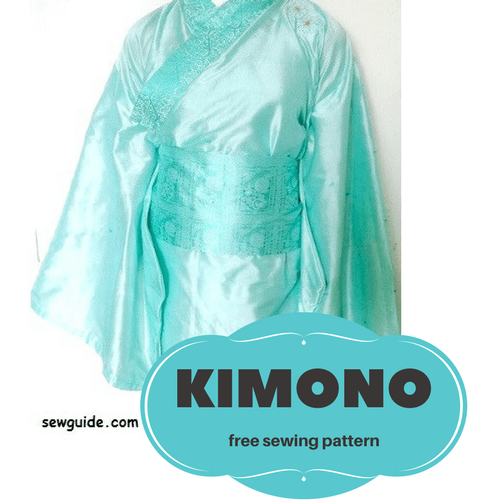
If you go to Japan and walk around the streets, there is a 95% chance that you will not find even one person wearing a Kimono.
No wonder, because at one point of time in Japanese History traditional clothes were discouraged by the government in favor of western clothes. Though some Japanese still wear a Kimono for functions and festivals and even weddings they are far and few.
Anyway Kimono is a beautiful garment and one of the most feminine of all dresses.
Yukata, the informal version of the kimono, usually made in cotton, can be sewn easily and can be worn as loungewear around the house. It is made of thin cotton and is unlined. I guess, this tutorial is for the yukata version of kimono.
When I decided to sew a Kimono, I thought it would be a very cumbersome task. But it has proved to be fairly easy. It is not only easy to make – it is easy to wear and to take care of, and to store. However, nothing in beauty to compare with the traditional and elaborate kimono.
Learn more about the traditional Japanese clothing & Kimonos here.
Fabric used to make a Kimono
Traditionally Kimonos were made in Silk. The cotton kimonos were used informally (Yukata). You can choose any fabric to make the kimono pattern here. I would think , since trying to make it in silk, a flowy fabric would be good, or a lightweight cotton one for a first attempt. Kimonos in Japan are mostly made of muted colours -though kids wear bright colured kimonos
I have a post in this site about sewing Kimono jackets . How different can kimono be from the kimono jacket -like cheese and chalk. Kimonos have straight lines which is the only similar feature with the kimono jackets.
Kimonos are tied at the waist with a sash called obi belts – very wide ones of 6 -12 inches. Obi belt ties the overlapping front flaps of kimono in place at the waist. The obi belt tying used to be an elaborate ceremony with its many complicated knotting- it even took hours to tie.
But you can also make simple obi belts.The obi belts are usually made of a different fabric from the kimono typically they are white for formal situations. You can wear obi belts matching with the kimonos informally though.
Related post : How to make an Obi belt
Kimonos are worn with the left front panel overlapping the right.
How much fabric is needed to make a kimono
This pattern is made in 5 -6 meters (depending on your body measurements though ). You will have to estimate according to the width and length of the panels for sewing the kimono. If you choose to line the kimono multiply the fabric yardage by two.
How to cut and sew a Kimono – DIY pattern
Step 1
Cut 2 fabric pieces of length 1.5 inches more than the length you need for the Kimono – width should be the full width of the fabric. Fold it by half. Measure around your Hip. Take 1/4 of this measure
On one of the folded fabric piece measure 1/4 of the hip round + 2inches . This is the back piece of the kimono
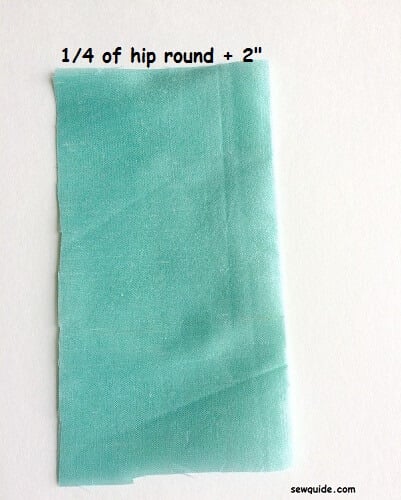
Mark the neck width as 3.25 inch from the fold. And mark down 1″ from the top. Cut it out ;this is the neck opening.
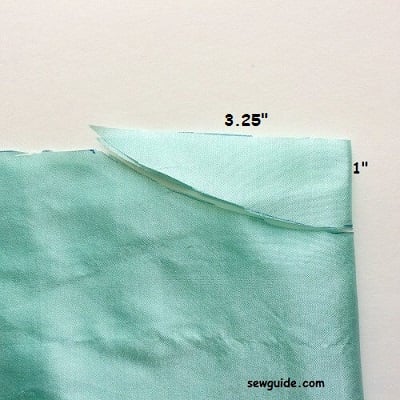
Step 2. Front pattern pieces of Kimono
Take the next fabric piece and fold by the center. Mark 1/4 of hip round + 6.5 inches from the fold.
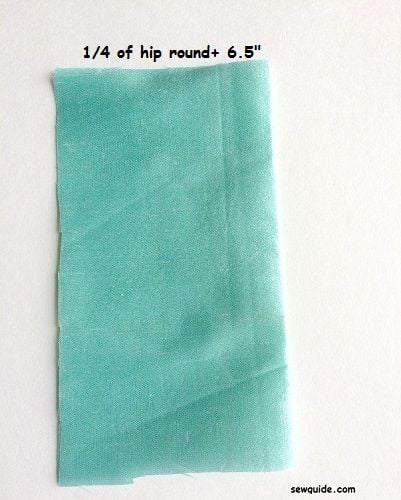
Mark the neck width 7.5 inch from the fold. and 12.5″ down from the top.
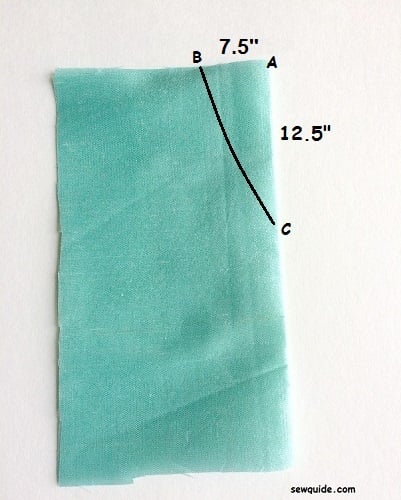
Cut out the neck opening. Also cut down the center . You are cutting the front piece into two pattern pieces
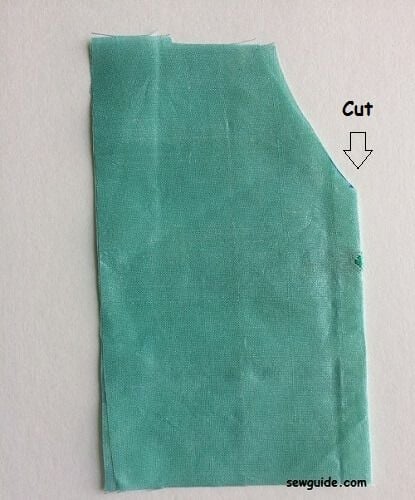
You get 2 mirror image front pieces for making the kimono
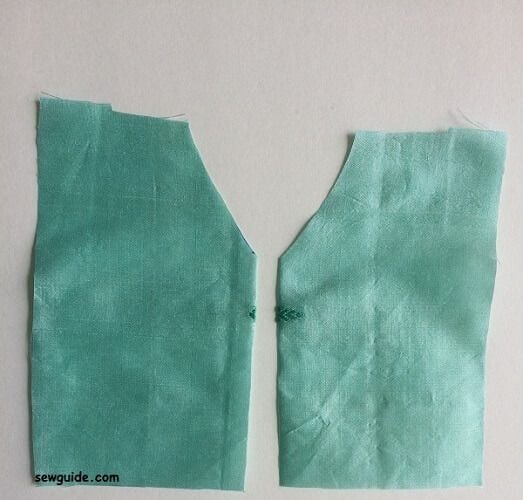
Step 3
Join the front panels and back panel at the shoulder. (Keep them rightsides together and stitch the shoulder seams)
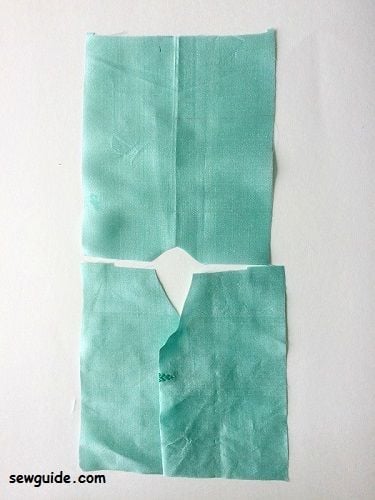
Hem the bottom edges of all the pieces – front and back.
Step 4
Cut out the sleeves as per the pattern given below
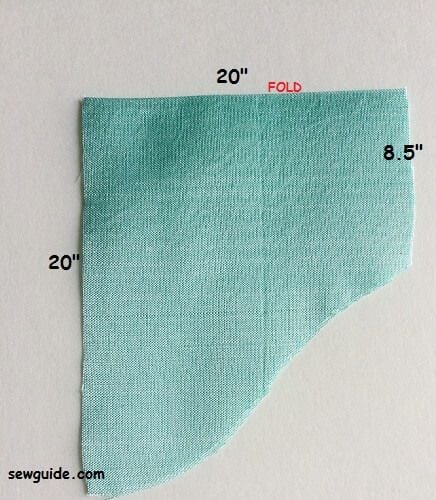
Stitch the hem of the sleeves.
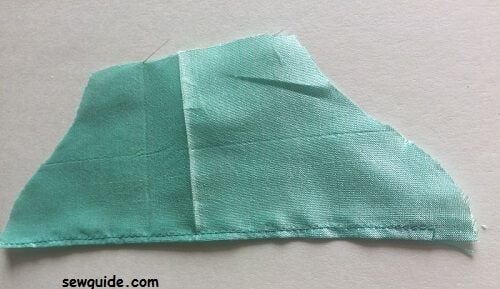
Now you have to join the sleeves to the body
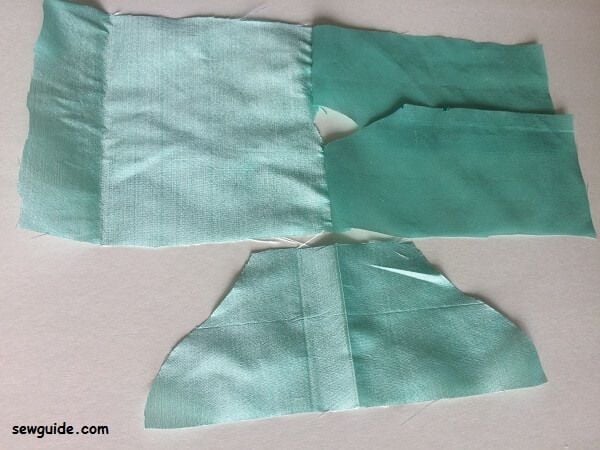
Keep the center of the sleeve aligned to the shoulder seam. Pin in place. Stitch
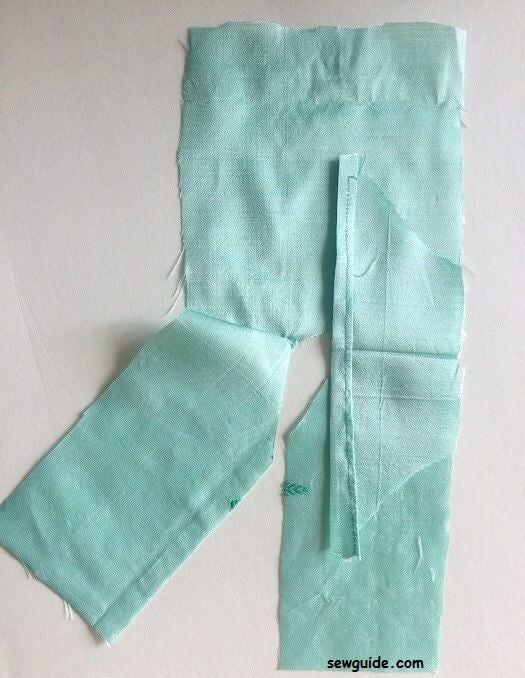
Step 5
Finish the front opening of the kimono
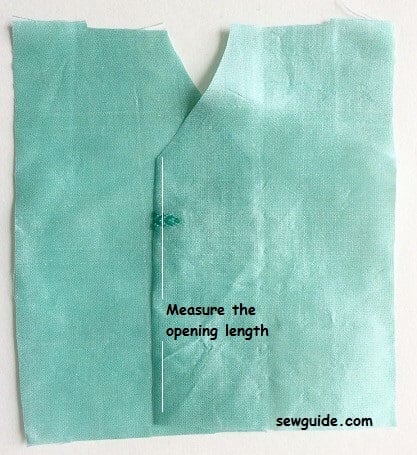
You will have to cut 2 long fabric strips the length of the opening atleast 1.5 inch wide.This is the facing for the opening. It will be folded to the back and stitched in place for a smooth look to the opening
Keep the facing face down on the opening and stitch the edges together. Remember to fold the top edge and bottom edge of the facing strip to the inside. Understitch the facing and seam allowance together as in the picture below
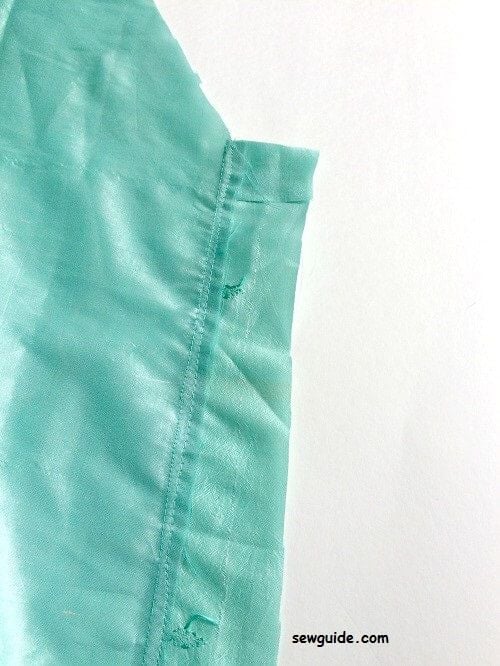
I have used hand stitches to stitch the facing to the inside. Handstitching will result in small stitches on the facing unlike machine stitching. You can always machine stitch if you are in a hurry
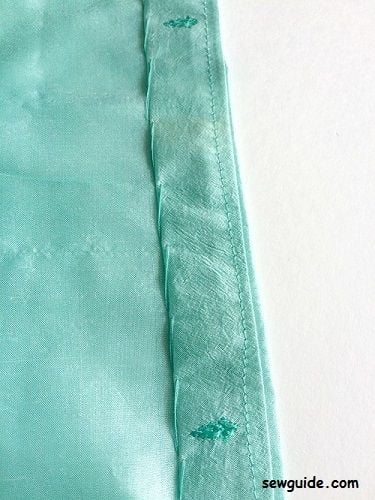
Use invisible stitching for this.
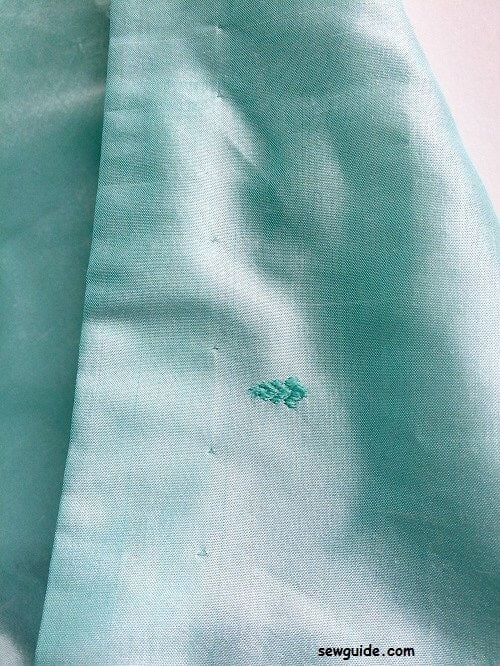
Now to finish the neck. Measure the whole neckline with a tape measure. Cut out a fabric piece 6.5 inches wide and 1 inch more than the measurement of the whole neckline ( for folding to the inside)
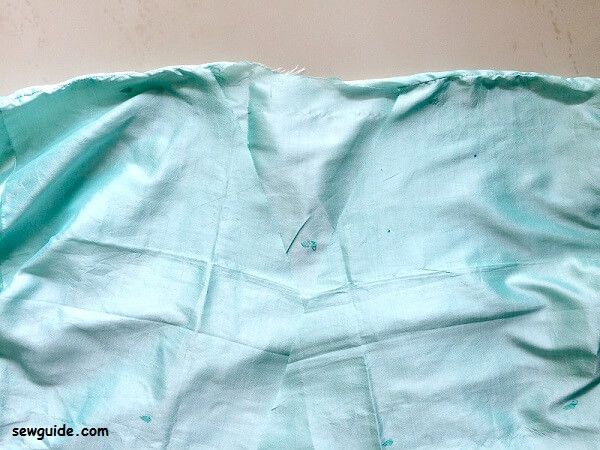
I have joined two brocade border fabric pieces to make the 6.5 inch cloth. You can take a continuous piece.
Keep an interfacing inside for some stability. Press in place. Press the top edge 1/2 inch to the inside. (For both ends)
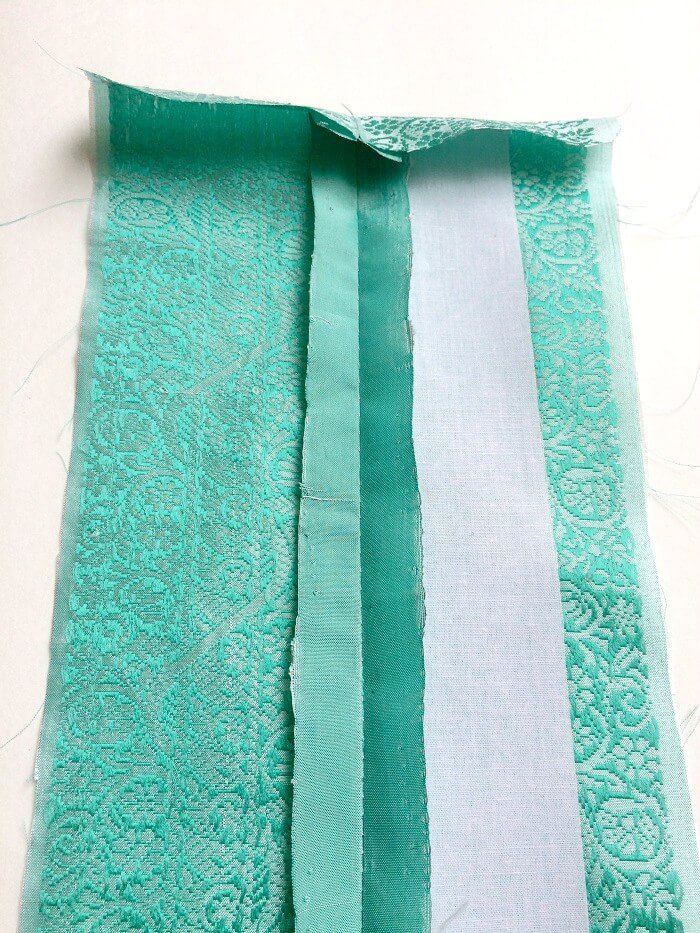
Press the neckline band by the center. Pin in place if you have to
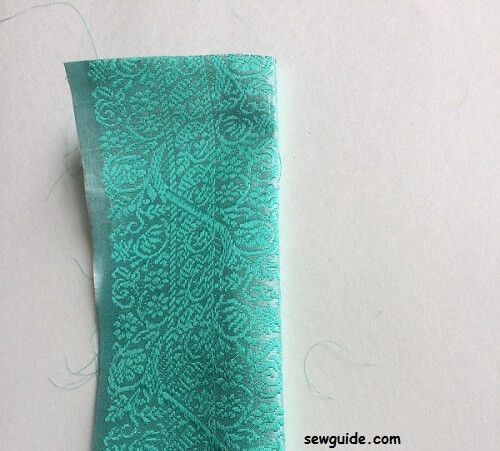
Pin the neckline band to the neckline, on the face of garment, cut edges together
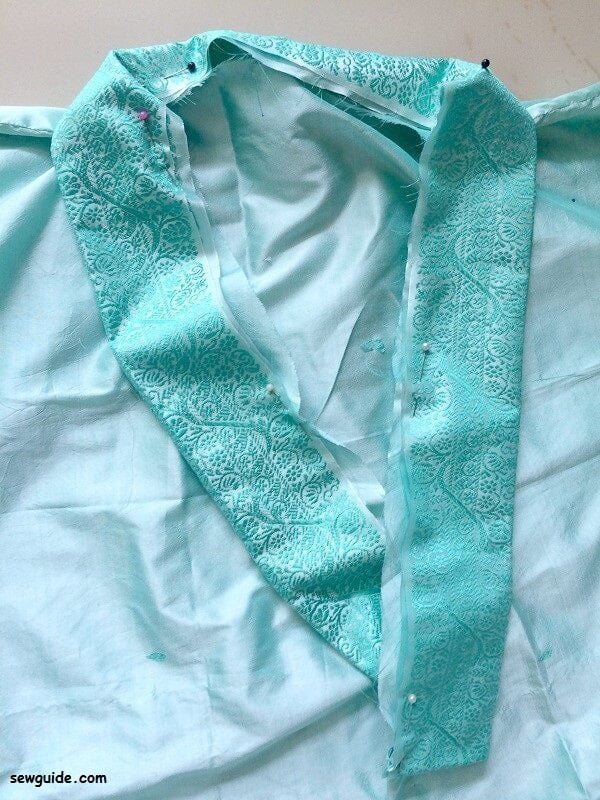
Sew in place with a 1/4 inch seam allowance. You can press the seam allowance down and stitch in the ditch through the seam line for added stability to the seam.
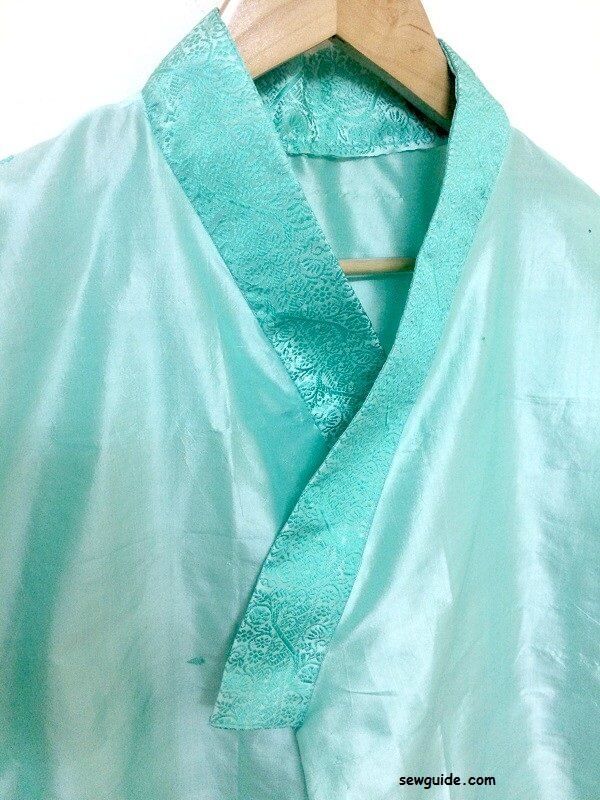
Now sew the side seams. Here the sleeve joining joint is a problem because of the straight cut of the kimono.
Stitch the sleeve seams,stop at the joint, keep the seam allowance to the side and continue sewing the side seams. Otherwise there will be puckering ( where the red arrow points).
Do not forget to backstitch whenever you start and end stitching
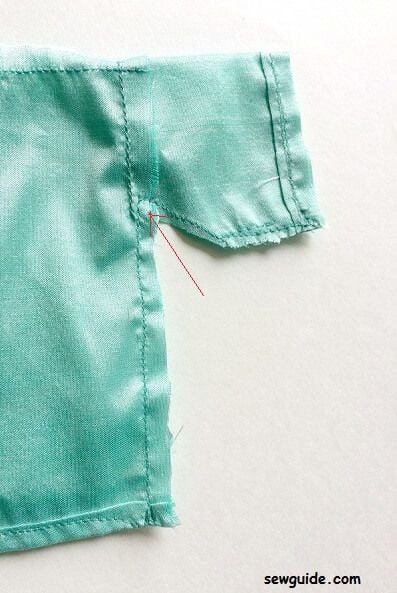
You can add some beautiful embroidered flowers or other motifs on your kimono. I tried with some metallic thread highlighted Sashiko flowers. I have added it near the left shoulder and intend to add more.
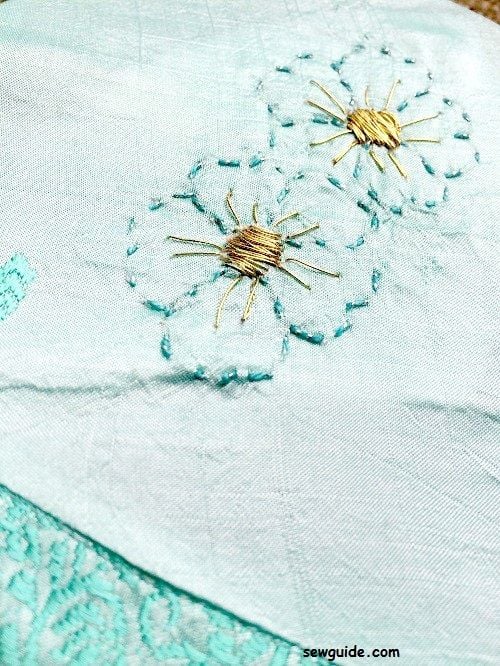
That is it. This Kimono is enough for me. If you are looking for a quick Kimono you will be happy with it. I hope no one from Japan sends a Samurai to kill me for making it like this.
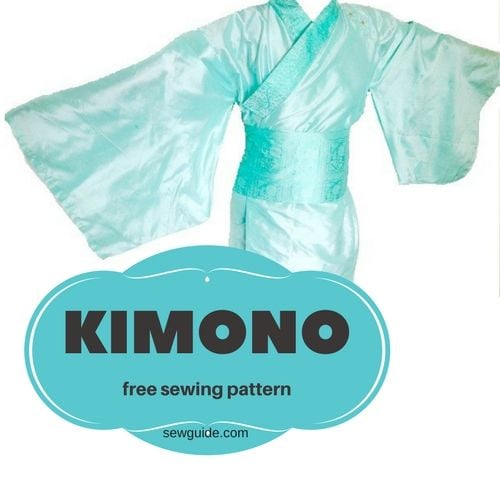
Related posts: Patterns for sewing clothes
Reference : The Social Life of Kimono: Japanese Fashion Past and Present by Sheila Cliffe.

You are talented .Your instruction so detailed and clear
Hello,
would it be possible to add the measurements also in cm? That would be awsome.
I tried to translate it and I had soo much trouble with the sice of my pattern.
Whats the publishing organization? Sorry its for a school project.
The pattern IS here – just follow the directions, including measuring your hips to know how wide the back is…. I would also measure from the top of my shoulder to the length I want, and add 1-3″ for a hem. Double this and add 40″ (for the sleeves) to know how much fabric to get. The simple cuts for the neck and sleeves just take measuring (and marking with pins, ) then cutting as directed. I’m going to look for some fabric tomorrow!
How can I get a copy of the pattern for this?
I don’t see the download for the PDF pattern on here, anywhere. I absolutely LOVE this design, and the tutorial is fantastic! I would love to be able to download the pattern and get to work on making this! Thank you so much for sharing!
so where is the pattern??????????
hy
may i ask if you would help me with a costume, im a bit confused how i should make that.
thx
greetings from vienna
Hi Bettina
if you will tell me and if i know i will definitely help you
You made a Chinese Hanfu actually.
thanks
This is very beautiful, I will definitely try this. Thank you for the tutorial.